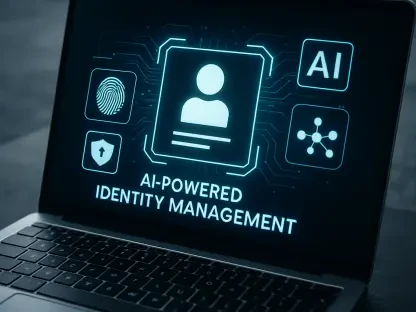In an era where technology continuously evolves, network edge devices like firewalls, routers, and VPNs face heightened security risks, especially amidst legacy infrastructure and a move towards hybrid work environments. Maryanne Baines, a seasoned expert in cloud technology, sheds light on how businesses can navigate these complexities to secure their network edge devices effectively.
What are the primary security risks associated with network edge devices today?
Today’s network edge devices represent high-value targets due to their direct exposure to the internet. Their vulnerability stems from various factors, including outdated software and configurations that attackers have readily accessible through tools like Shodan.io. This exposure makes them attractive to cybercriminals looking for easy access points into business networks.
How do legacy infrastructure and lack of visibility contribute to the vulnerability of network edge devices?
Legacy infrastructure often lacks updates and support, effectively leaving devices as open doors to hackers familiar with exploiting end-of-life systems. The absence of visibility exacerbates this issue since businesses can’t adequately protect what they are unaware of—even worse when default settings persist uninhibited in such environments.
Why are VPNs particularly vulnerable to attacks, according to the Sophos Annual Threat Report?
VPNs were highlighted in the Sophos Annual Threat Report for their frequent compromise. Often considered brittle, these systems can be heavily exploited due to their inherent vulnerabilities when not updated or patched regularly. Their integral role in remote work makes them prime targets for attackers aiming to infiltrate deeper into organizational networks.
What role do end-of-life devices play in network security risks, and why are they often neglected in patching priorities?
End-of-life devices pose significant security threats because they receive no updates or support, turning them into potential exploits for attackers when neglected in patching schedules. Organizations usually prioritize active devices, inadvertently leaving such deprecated systems vulnerable to cyber threats.
Can you explain why edge devices are considered “low-hanging fruit” for attackers?
Edge devices are seen as “low-hanging fruit” due to their ease of compromise and strategic importance in network architecture. Neglected upkeep and patching make these devices straightforward entry points for attackers seeking quick infiltration routes, especially in businesses relying heavily on outdated technology.
How do tools like Shodan.io contribute to the vulnerability of network edge devices?
Shodan.io serves as a “Google for internet-connected devices,” allowing attackers to easily search and identify exposed devices. This accessibility increases the chance of exploitation, making it easier for cybercriminals to pinpoint vulnerable and unprotected entry points.
What are the challenges companies face in securing edge devices in hybrid and remote work environments?
As hybrid and remote work setups become prevalent, securing edge devices like VPNs and secure gateways becomes more challenging due to their expanded usage. Balancing seamless connectivity with stringent security protocols demands deeper visibility into network activity and faster detection of unauthorized access.
Why is patching edge devices often difficult, and what strategies can be used to address this?
Patching demands downtime, which can disrupt business operations, making it difficult to implement regularly. Establishing predefined outage windows for patching can alleviate this issue, enabling consistent updates without necessitating prolonged negotiations within organizations.
How important is visibility in managing edge security risks, and what steps can organizations take to improve it?
Visibility is paramount in managing edge security risks because unidentified assets cannot be protected. Companies should start by conducting thorough inventories and audits to detect all edge devices, ensuring no exploitable gaps are overlooked within their infrastructure.
What are some “quick wins” that businesses can implement to enhance the security of their edge devices?
Implementing multi-factor authentication, regular patch updates, and locking down configurations can serve as quick wins for businesses. Such measures help reinforce security by closing off potential vulnerabilities and requiring stronger identity verification measures.
Why is it important to change default credentials and lock down configurations on edge devices?
Default credentials present a simple backdoor for attackers. Changing these settings, along with locking down unnecessary ports and services, acts as a critical barrier preventing unauthorized access and reducing system vulnerabilities.
What are the benefits of decommissioning legacy VPNs?
Decommissioning legacy VPNs mitigates risks associated with their well-known frailties, opting instead for more secure technologies. This transition helps fortify the network against vulnerabilities heavily targeted by modern cyber threats.
How does logging on edge devices contribute to enhanced security?
Systematic logging allows for continuous monitoring and analysis of network activities, enabling the detection of anomalies that may suggest potential breaches. This proactive oversight helps anticipate and counteract threats before they escalate.
Why is continuous security monitoring crucial for edge devices?
Continuous monitoring is vital as edge devices generally lack inherent security features. Forwarding logs to centralized systems enables comprehensive scrutiny, fostering quick responses and containment strategies against emerging threats.
What strategies can organizations employ to limit the damage if a cyber-attack occurs on edge devices?
Integrating a robust security architecture that complicates lateral movement of attackers within a network is key to mitigating impact. Regular vulnerability scans and prompt incident response procedures further fortify the infrastructure against recurring threats.
How can external vulnerability scanning aid in identifying network security weaknesses?
External vulnerability scanning actively seeks out potential weaknesses stemming from missing patches or misconfigurations. By consistently identifying these vulnerabilities, organizations can address them swiftly, bolstering their overall network security posture.
What is the significance of disabling public-facing admin interfaces in reducing risk exposure?
Disabling these interfaces limits accessible points for attackers, reducing opportunities for exploitation. It’s a preventative measure that lowers an organization’s risk profile and fosters a more secure perimeter.
How can training staff on edge device risks be integrated into incident response planning?
Training fosters awareness of potential risks and equips teams to effectively test and refine incident response plans. Educating staff on specific vulnerabilities and response tactics empowers them to mitigate breaches beginning at the edge.
When purchasing new edge devices, what factors should companies consider to ensure strong security practices?
Companies should prioritize vendors demonstrating robust patch management and active vulnerability disclosure processes. Additionally, modern security stack integrations and compliance with current cybersecurity standards should be pivotal in decision-making.
How can zero trust network architecture (ZTNA) help minimize attack surface exposure on the internet?
ZTNA enforces strict identity-based access controls, ensuring that only authenticated entities can traverse network resources. This model minimizes exposure by restricting access solely to trusted users, significantly reducing potential entry points for attackers.









